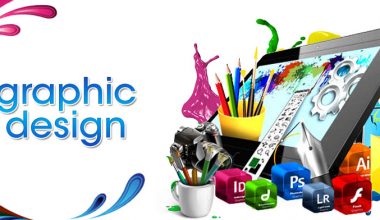Have you ever thought of how the beautiful things we use are created? An industrial designer has designed everything from your iPhone 11 pro-Max to an exotic Lamborghini to the sleekest Macbook laptop to spaceships and satellites. Get such creativity by studying in any of our best Industrial Design Schools in the world.
Industrial design schools teach students to design systems and create products that ultimately optimize their employers’ or customers’ value, function, and appearance.
As a professional service, the job of the Industrial Designer is to use the benefits of data collection and analysis to provide clear and concise conclusions that ultimately offer improved consumer benefits.
Recommendations are provided through drawings, descriptions, and design models.
Think about the products you use every day. Most of them are helpful, attractive, and seem very simple.
However, even the most straightforward products are much more complicated than they may seem. These products must not only be conceptualized and designed but must also be manufactured.
If you desire a place in that niche, Study this piece closely because it promises to give you all the information about the Best Industrial Design Schools in the world.
Meanwhile, below is our table of content.
Table of contents
- What Do Industrial Designers Do?
- What are Industrial Design Schools?
- What Are The Different Types Of Industrial Design Schools?
- What is the Best Industrial Design school
- 1. Massachusetts Institute of Technology (MIT)
- 2. University of the Arts, London
- 3. ETH Federal Institute of Technology of Zurich-Switzerland
- 4. Royal College Of Art
- 5. Parsons The New School of Design, New York
- 6. Politecnico di Milano
- 7. OCAD University, Ontario
- 8. Purdue University, Indiana
- 9. ArtCenter College of Design, Pasadena, California
- 10. Virginia Tech
- Can I get an industrial design degree online?
- What can I do with an industrial design degree?
- How long does it take to get a degree in industrial design?
- What are the Job Prospects for Industrial Designers?
- Industrial Design Schools | FAQs
- Conclusion
- References
- Writer’s Recommendations
What Do Industrial Designers Do?
Industrial designers create visually appealing and easy products by combining an artistic and engineering vision with an acute sense of business development.
These professionals observe, model, and test their designs for items such as furniture and appliances so that they are optimal. Industrial designers need a bachelor’s degree in industrial design or a related field for entry-level employment.
Basic art and design skills are also essential for this career.
What are Industrial Design Schools?
Industrial design schools are educational facilities that allow students to learn all aspects of the industrial design process. This complex process requires a series of specialized skills.
Professionals in industrial design must be more than artistic. They must also have a firm understanding and knowledge of the manufacturing process.
These professionals must also be able to design safe and valuable products and manufacture them in the most economical way possible.
There are several different specialties in industrial design to choose from when you attend industrial design schools. Whether you are interested in designing kitchen appliances or luxury cars, industrial design schools can help you prepare for this challenging and rewarding career.
If you would love to design beautiful and exotic cars: see these automotive design schools.
What Are The Different Types Of Industrial Design Schools?
An industrial design school is not usually a separate school in itself. Typically, industrial design schools are small parts of larger schools or universities. Traditional colleges and universities, for example, offer industrial design degrees. There are also online programs available.
Art and design schools also offer industrial design schools. These schools often focus more on aesthetics and the artistic aspect of industrial design, but students also often learn about the manufacturing process.
Technical and vocational schools also often offer industrial design degree programs.
What is the Best Industrial Design school
These are the institutions that take their time to cultivate talents and development. The world is full of professionals who are alumni of these establishments.
In addition, their thriving careers in the industrial design sector show that these institutions do not fail a person.
Over the years, these institutions have worked hard to build their name. So far, they are doing very well. However, one can be sure that this talent will be nurtured without difficulties.
Here is the list of best industrial design schools in the world
- Massachusetts Institute of Technology (MIT)
- University of the Arts, London
- ETH Federal Institute of Technology of Zurich-SwitzerlandRoyal College Of Art
- Royal College Of Art
- Parsons The New School of Design, New York
- Di Milano Polytechnic
- OCAD University, Toronto, Ontario
- Purdue University, Indiana
- ArtCenter College of Design, Pasadena, California
- Virginia Tech
1. Massachusetts Institute of Technology (MIT)
The Massachusetts Institute of Technology is a world-class institution that is reputed to be among the top-ranking universities in the world and one of the best industrial design schools in the world.
It is excellent in the learning environment and teaching processes they take their students. As an institution, they offer courses in product design and development.
This course is attractive, and students get involved in practical projects that sharpen their design skills. The learning module will typically include workshop modes where students perform exercises.
The institution takes time to teach students how to identify what their target audience needs. From there, they can devise a design concept and carry it out until the end.
That is why their products consistently meet people’s expectations. This is also the reason why their students thrive in the market.
Tuition Fees: $48,452
Acceptance Rate: 6.7%
2. University of the Arts, London
The University of the Arts, London, has produced high-quality industrial or product design professionals. It is one of the best industrial design schools in the world.
Over the years, it has been known to provide experienced individuals. These are people who respond perfectly to changing trends and play strategic roles. The professionals of this institution are also known as trend makers.
This is because the school promotes free thinking. In the multidisciplinary education module and the students get involved in many projects. In addition, its teaching structure encompasses business, discourse, audiences, and service.
All of these are designed with emphasis that they use to train their students.
They teach their students to take risks with exploration so that they can make significant advances in the design processes.
They also equip students with the ability to face challenges and solve them. The university offers students opportunities and interactions with esteemed individuals in the field.
Tuition Fees: 9,000 GBP
Acceptance Rate: 22%
3. ETH Federal Institute of Technology of Zurich-Switzerland
Industrial design is one of the most appreciated courses offered at ETH Zurich- Swiss Federal Institute of Technology. The school is reputed to be among the best industrial design schools in the world.
It imparts relevant knowledge and skills in the changing design world. The faculty offers interdisciplinary learning modules that help produce complete individuals.
Its teaching module is based on the natural environment, social relevance, and technology. Students always graduate as capable people in the creation of industrial products.
All graduates of this university have been able to reflect critically on their professionalism in their work. However, with the new technologies, students can keep up and produce quality jobs.
In addition, their training objectives aim to ensure that critical social aspects are considered. The faculty encourages creativity, innovation, and imagination. In this way, students are more than capable of taking advantage of their greatness and showing it.
However, this institution is highly appreciated by many for its excellence.
Tuition Fee: 1,229 CHF
Acceptance Rate: 27%
4. Royal College Of Art
This university offers the concept of industrial design under the “Design Products Program.” The university’s robust teaching scheme encourages students to grow and become leaders.
It teaches them to be leaders who can solve the problem of the world with their creativity and technical capacity. His teaching process includes a design mindset for a purpose and follows the stipulated design culture.
The faculty comprises experienced tutors who are active in their design careers. However, there are also study groups that help students understand different concepts. The technical support that students receive from prototypes is also excellent.
Projects in which students get involved are usually exhibited in London and elsewhere. In addition, this means that they are exposed to the world to have a place to start in society when they graduate.
After thorough training in the institution, there is no way that graduates do not stand out from their peers from other institutions. Hence, the institution stands out among the best colleges for industrial design.
Tuition Fees: $12,500
Acceptance Rate: 27.2%.
5. Parsons The New School of Design, New York
The Parsons Design School is recognized for its quality education and is one of the best colleges for industrial design. They offer product design at the undergraduate level, and at the graduate level, they provide industrial design.
However, enrolling in a Master of Fine Arts in Industrial Design is rewarding.
The course offered is for two years and is full-time. Even so, it is more rewarding.
The university is renowned for producing well-experienced, relevant, and productive industrial designers in the ever-changing industry. In addition, the learning process aims to equip students with knowledge that will help them locally and internationally.
As they learn, they are mentally and physically prepared to meet the needs of people locally or internationally. The university raises individuals who are always competent and competitive.
That is why its former student thrives in the world. However, at the undergraduate level, the same can also be said. They strive to produce capable individuals who live up to the task.
Tuition Fees: $46,960
Acceptance Rate:35%
6. Politecnico di Milano
Politecnico di Milano (Polytechnic University of Milan) is the number one position as the best technical university in Italy and the best college for industrial design. There are many reasons why you should choose this university.
The simple fact that it appeared on our list should be convincing enough. With many laboratories, students are exposed to an excellent research environment.
The learning module pays close attention to the quality of teaching and research. Experimental research is crucial for a student’s growth, and this university clearly understands this.
However, many students who graduate from this university annually leave well-equipped for industrial design processes. The faculty ensures that students participate in training projects and research projects.
They strive to collaborate with other top-level universities in European countries. What makes them unique is the ability to link book learning with learning at work. This gives a student an advantage in the labor market.
Tuition Fees: 3,500 EUR
Acceptance Rate: 47%
7. OCAD University, Ontario
Located in the iconic Sharp Center for Design by Will Alsop, the Ontario College of Art and Design University (OCAD-U) industrial design program is the best school for comprehensive system design, which addresses global problems as defined by the United Nations’ sustainable development goals for 2030
The resulting work is ambitious in its synthesis of disciplines, for example, a lunch kit that addresses the impending food crisis by eliminating meat and plastic and integrating an application to monitor daily nutrition.
The program asks students to imagine products and services located at the crossroads of “the artifact,” “the system,” and “the experience,” which, at present, often means responding to our digital shadows.
Tuition Fees: $7,300
Acceptance Rate:50%
8. Purdue University, Indiana
One of the leading land grant research institutions, Purdue University, is one of the most recognizable names in the Midwest, acclaimed by USNews & World Report as one of the top 20 public universities and one of the top 10 programs for undergraduates in the nation.
As a land-granting university, Purdue has always been a leader in science and engineering but is equally recognized in liberal arts, including literature, writing, art, and design.
Purdue’s equal excellence in science and arts informs its first-level Department of Art and Design, an industrial and interaction design leader.
The Department of Art and Design offers the BFA of Purdue University in Industrial Design, a NASAD-accredited professional degree program of deep immersion designed to unite innovative technical and thinking skills that make great industrial designers.
Students practice sketches and designs with traditional tools and three-dimensional designs with technological tools, as well as collaboration and leadership through competitions and interdisciplinary projects.
Purdue is a reliable source in the Midwest and country to ensure entry into a rewarding career.
Tuition Fees: $28,804
Acceptance Rate: 56%
9. ArtCenter College of Design, Pasadena, California
ArtCenter may be a small school, but what it lacks in size makes up for it with a highly respected program, a conservatory approach, a large number of spaces for next-level creators, and a faculty of renowned industry professionals.
The attitude of the ArtCenter training camp demands hard work from its students, so the school attracts a mature and motivated student body. Speaking of driving, ArtCenter also has an innovative transportation design department, with many alums looking for work in luxury car companies.
Whatever their approach, many graduates attest that their studies at ArtCenter are the most challenging thing they have done, but they made them stand out professionally.
Tuition Fees: US $40,000
Acceptance Rate: 69.3%
10. Virginia Tech
The Polytechnic Institute of Virginia and the State University, better known as Virginia Tech, are widely regarded as one of the best public universities in the country, a model of applied sciences, engineering, and business education.
As a land-granting university, Virginia Tech is one of the most respected agricultural schools, and its urban architecture and planning department is one of the most influential in the world.
The entire mission of Virginia Tech is focused on providing the best possible education to the people of Virginia, with careers ready for the market and changing the world while waiting for graduates.
The award-winning School of Architecture + Design offers the Virginia Tech Industrial Design program a world-class curriculum that builds on the experience of professionals, deep corporate partnerships, and hands-on learning to prepare students for each challenge in industrial design.
Virginia Tech’s industrial design puts people first, implementing humanistic values and technical skills to make products useful. Graduates can expect Virginia Tech’s reputation, backed by NASAD accreditation, to take them away.
Tuition Fees: $29,975
Acceptance Rate: 70.9%
Can I get an industrial design degree online?
There are online programs available that allow you to complete your studies through the Internet. This is an excellent option if you have other commitments, such as family or a busy work schedule, making it impossible to attend campus.
People interested in industrial design can find online courses that cover fundamental concepts in the field and help them develop their design skills. The appropriate educational options are available at the undergraduate and postgraduate levels and sometimes as optional courses in architecture programs.
The following are some online industrial design courses that are commonly offered.
Design theory course: This course examines the origins and development of design, including classical Greek, European and Western influences. Students review industrial design, architecture, engineering, and urban planning examples from various periods and premises.
Product design course: Students learn to research, design, and build products people want or need. They learn how to represent products in full-size models and execute projects according to the design.
Form development course: The lessons cover three-dimensional design, surfaces, volumes, and differences between geometric shapes and free forms. Students learn to create high-quality models from sketches through various design processes.
Industrial Design Perspectives Course: Students learn to represent objects accurately in the design. They study the principles of perspectives and explore the use of shadows, reflections, and lighting sources. They practice the creation of 3-D objects in plans and drafts in 2-D.
Design drawing course: Design artists perfect basic drawing skills with pencils, pens, chalk, and other drawing material so they can draw quickly and accurately. They learn to improve their drawing skills to improve representations in their plans and models. The courses cover crafts, contrast, composition, representation, and perspective.
Model creation course: This online course teaches basic model creation skills by addressing the materials, tools, drawing skills, and design techniques needed to build a full-scale model. Students may be asked to create a product model from scratch and submit documentation through the Web.
Problem-solving course in design: This course deals with conceptual and technical problems in design. Enrollees learn to investigate, define and evaluate issues, and then they must test the theories to correct the problems. Students pay attention to the models’ function, appearance, and configuration.
Digital imaging course: This course explores the standard digital tools used in industrial design. 2D raster and vector software are used to develop drawing and communication skills. Image retouching, fast digital sketching, vector art techniques, and 2D digital presentation are also covered.
Industrial Design History Course: In this course, students explore the evolution of industrial design, beginning with early mechanization and the industrial revolution. They also learn how advances during different periods have affected current practices in the area.
Computer drawing course: Students learn to use computer software for mechanical drawings and 3D renderings. Fundamental drafting principles and dimension conventions are an essential part of the curriculum.
What can I do with an industrial design degree?
In the last century, the field of industrial design has multiplied and continues to grow today. Graduates of industrial design schools will often have no trouble finding work, especially since consumers discover that they need more and more products to lead a comfortable lifestyle.
Graduates of industrial design schools can often find employment in factories and manufacturing plants. Large companies and corporations also often hire industrial designers to design and help create a series of different products.
How long does it take to get a degree in industrial design?
The bachelor’s degree is for eight periods of 14 weeks each and can be completed in a minimum of two years and eight months if you attend for three periods a year.
You can choose to attend for two or three full periods per year. Master’s programs are four to six terms.
How much does Industrial Design School Cost?
On average, you can expect to spend a little more than $38,000 a year on tuition and fees, books and supplies, and room and board expenses for a college degree in industrial and product design if you attend as an out-of-state student.
How much can I earn with an Industrial Design Degree?
The average annual salary for industrial designers is $66,590. The average wage is at which half of the workers in an occupation earned more than that amount, and the other half made less.
The lowest 10 percent earned less than $38,630, and the highest 10 percent earned more than $108,040. Industrial designers who work independently or for companies that hire them for other organizations may need to adjust their workdays frequently to meet clients in the evenings or on weekends.
In addition, they can spend part of their time looking for new projects or competing with other designers for contracts.
What are the Job Prospects for Industrial Designers?
The employment of industrial designers is projected to grow 3 percent over the next ten years, slower than the average of all occupations. Consumer demand for innovative products and new product styles should support the need for industrial designers.
The employment of industrial designers is likely to continue to grow in areas that require a high degree of technical skill and design sophistication. Products in these areas require that detailed user specifications be incorporated into the design process to meet consumer expectations and ensure efficient and enjoyable product use. However, employment in the manufacturing industry is expected to decrease by 2 percent over the next decade.
Industrial Design Schools | FAQs
Massachusetts Institute of Technology
One thing to note is that MIT is one of the most challenging schools to get into in the United States, with an acceptance rate that hovers at around six percent.
Grades and SAT scores still matter.
If you thought applying to art school meant you could forget about your GPA, SAT, or ACT, think again. Art schools want to know that their students are serious about education. By looking at your grades, colleges can tell what kind of student you’ll be if you attend their school.
A bachelor’s degree in industrial design, architecture, or engineering is usually required for entry-level industrial design jobs. Most industrial design programs include courses that industrial designers need in design: drawing, computer-aided design and drafting (CADD), and three-dimensional modeling.
You usually don’t do a lot of math in the basic design activities. Some projects require various arithmetical calculations, but not advanced math like calculus. When designing the final parts, you may need to calculate dimensions and tolerances.
Conclusion
Industrial designs remove the difficulty of taking you through each system’s complicated stages. Instead, it narrows everything down into accessible functionalities.
Taking up a career in Industrial design is amazing, as the profession has a lot of magnificent prospects.
References
- https://www.theartcareerproject.com/schools/industrial-design/
- https://www.niche.com/colleges/search/best-colleges-with-industrial-and-product-design/
- https://www.valuecolleges.com/rankings/undergraduate-industrial-design/
- https://www.azuremagazine.com/article/top-industrial-design-schools-in-north-america/
- https://www.collegeraptor.com/Majors/Details/50.0404/Level/Bachelors-degree/Industrial-and-Product-Design
Writer’s Recommendations
DISCLOSURE: This post may contain affiliate links, meaning when you click the links and make a purchase, we receive a commission.






Comments are closed.